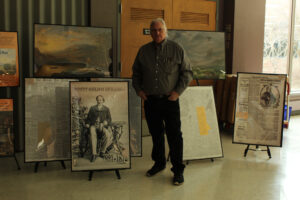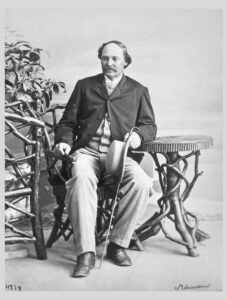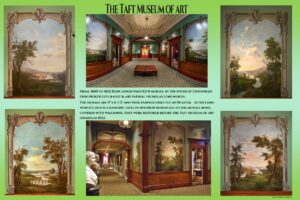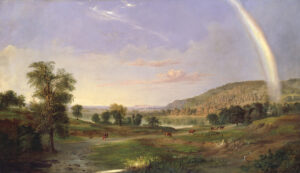Murals hidden behind wallpaper, a tour around Europe, a painting made for a king and one hanging during the president’s inauguration.

The story of Robert S. Duncanson paints a picture of a man who started as an apprentice house painter, but chose to pursue landscape painting and had remarkable success in it.
Jeff Albergo and Patrick Barley came to MCCC to share Duncanson’s life works on Feb. 21.
Albergo is a co-founder of the Robert Seldon Duncanson Society, along with fellow artists Dora Kelley and Sandy Vanisacker. Barley is president of the chapter.
Their mission is to spread the word about Duncanson’s art and try to get the recognition that they feel his work deserves.
“History lives on every corner, is what I used to say,” Albergo said.
During his presentation, Albergo said he was shocked that out of 175 historic markers in town, there is not one for Duncanson.
“There’s not a school, there’s not a road, there’s nothing,” he said.

Robert Seldon Duncanson was born in Seneca County, New York, in 1821. His father was a Canadian of Scottish descent, and his mother was African American, thus making him born free from slavery.
He followed in his father’s footsteps as an apprentice to his house painting business. Duncanson started that business with John Gamblin.
House painting was not what Duncanson wanted to do, so he began painting landscape paintings in his 30s and moved to Cincinnati, Ohio, one of the first people to notice his work was Ruben Graham.
The two became friends and in 1842, Duncanson married Graham’s daughter Rebecca and they had two children. Not much more is known about them.
A winemaker and one of the first millionaires of Cincinnati, Nicholas Longsworth, hired Duncanson to paint murals on the walls of his home. These paintings were 9 feet tall and 6 ½ feet wide. He painted a frame around each mural in gold paint.
Longsworth paid Duncanson for his work with a tour around Europe. He toured England and France. He was asked to paint a picture for the King of Sweden and Norway Oscar I.

In 1853, Hunter Conover hired Duncanson to do a painting of the book cover for “Uncle Tom’s Cabin,” a novel written by Harriet Beecher Stowe. He painted a scene from the book of Uncle Tom and Little Eva.
Albergo said the wonderful paintings that Duncanson did for Longsworth were covered over with wallpaper.
Joseph Longworth inherited the estate after his father died in 1863.
It was in 1932 that Duncanson’s murals were uncovered and restored. The museum is still open in Cincinnati and the murals cover eight walls of the home.
In addition to all the paintings that gained recognition, Duncanson remembered his roots and how he may have been born a free man, but he showed support in ways he could. He completed portraits of abolitionists, donated paintings to the cause, took part in protests and attended anti-slavery lectures.
Albergo said he was amazed when watching the Jan. 20, 2023, inauguration of President Joe Biden that a Duncanson painting was hanging on the wall of the Capitol.
Before his death, Duncanson wrote to his son, “I have no color on the brain, all I have on the brain is paint. I care not for color. Love is my principal, order is the basis, progress is the end.”


